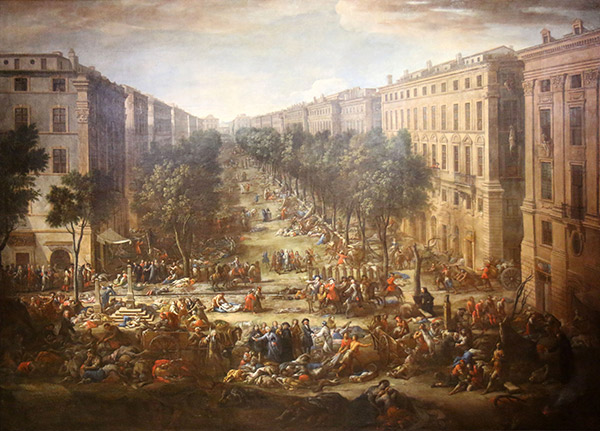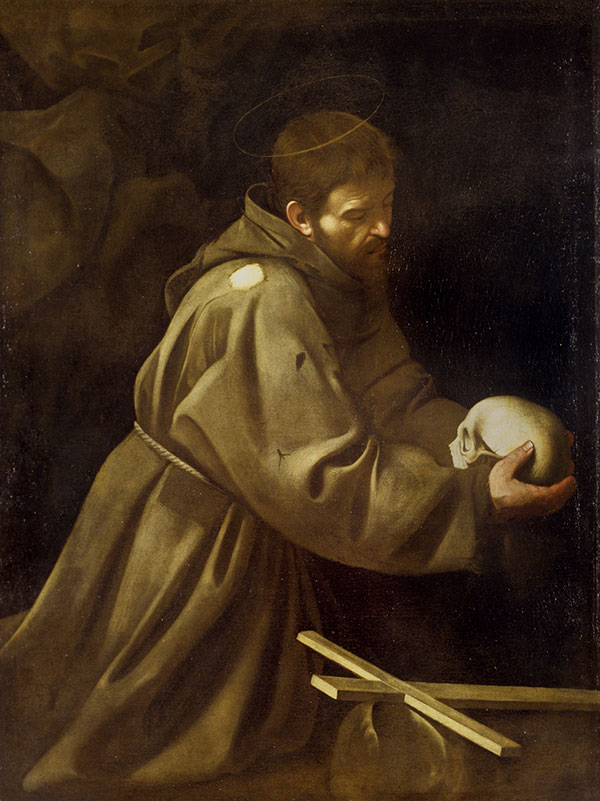Subtotal: $
Checkout-

By the Lights of Brush and Night
-

Learning to Stay
-

Apart Together
-

A Pain in the Navel: Letter from Bogotá
-

The Eternal Questions Illustrated
-

Fellow Feeling in a Crisis
-

Of Ducklings and Baby Fish
-

Service from Suffering
-

Patience in Lockdown
-

A Unique Time of God?
-

Mother Peregrine
-

This Too Shall Pass?
-

A Time for Regeneration
-

The Hard Work of Conversion
-

Tinned Fruit in Times of Famine
-

Floodplain
-

When the Church Doors Close
-

The Pilgrims’ Mark
-

Grateful for Each Breath
-

Care, Pray, Trust, Obey
-

Uncanny Homes
-

Schooling Hope
-

When the Sickness Is Over
-

The Home Is the School
-

Grieving Alone, Together
-

The Art of Dying
-

Scraps and Ruins
-

Clean House
-

Psalms for the Sick
-

The Book of Repose
-

Breaking the Fast in a Broken World
-

Sister of the Four
-

Remember When...?
-

The Rawness of the World
-

Precious Friend: What’s Your Victory Song?
-

The Abomination of Desolation
-

Philip Larkin’s “The Trees”
-

Shutdown Hospitality

Plagues, while bringing devastation, have often spurred humanity to creative heights. Amidst fear, helplessness, and death, some people reach beyond their immediate plight to achieve something beautiful and lasting. Works of art produced amid pestilence offer insight into how human beings have struggled to bring out their best even while suffering the worst.
The ancient world responded to the capricious and arbitrary face of infectious disease – descending, decimating, and disappearing – with images of stability. The first temple to Asclepius, the god of healing, was constructed in Epidaurus in 430 BC in the wake of a plague that had claimed the life of Pericles. Designed by Theodotus, the temple was on par with the magnificent shrines to Zeus and Apollo. It elicited the admiration of observers such as Paulus Emilius in 167 BC and Pausanius in the second century AD, who marveled at the gold and ivory statue of the deity contained within it. This temple to healing was not only allied with beauty – seen as order and stability in antiquity – but also with interior comeliness. The inscription at the entrance read: “Pure must be he who enters the fragrant temple; purity means to think nothing but holy thoughts” – a direction to the ailing to look beyond the body for healing.
Rome adopted the cult to Asclepius during the great plague of 292 BC, building an extraordinary temple in the form of a ship on Tiber Island. More such temples would gradually fill the nascent empire thanks to the ubiquitous imperial troops. As the empire spread and Roman virtue declined, the ability to look upwards or inwards during times of epidemic disease diminished. When a pandemic broke out in AD 250, ravaging Carthage, Rome, and Alexandria, Pontius of Carthage lamented, “No one regarded anything besides his cruel gains. No one trembled at the remembrance of a similar event. No one did to another what he himself wished to experience.”
Within this scourge, Christianity emerged in its splendor. This persecuted cult came out of hiding to care for the sick, regardless of religion or social status. The tangible faith that animated Christians’ charity brought about numerous conversions. Given their outlaw status, Christians had no monuments erected to them, but their faith offered a vista of hope in response to suffering.
At the height of the plague in Carthage, Saint Cyprian wrote: “What a grandeur of spirit it is to struggle with all the powers of an unshaken mind against so many onsets of devastation and death! What sublimity, to stand erect amid the desolation of the human race, and not to lie prostrate with those who have no hope in God; but rather to rejoice, and to embrace the benefit of the occasion; that in thus bravely showing forth our faith, and by suffering endured, going forward to Christ by the narrow way that Christ trod, we may receive the reward of His life and faith according to His own judgment.” This unwavering vision of promise of eternal life would shape Christian art for over a thousand years.
Once legalized, Christianity energetically engaged the arts. Followers of Jesus started with churches and moved on to mosaics, fresco panels, and statues. Images of Saint Sebastian and later, Saint Roch appeared in chapels as patron saints of plagues. Saint Sebastian, a senior military officer in the Roman legions in AD 300, served, but would not worship, the emperor. Arrested by his own troops, he was shot with arrows but lived and was found and tended to by a saintly woman. He returned to his post, still unwilling to adore the false god, and was then clubbed to death. Since the wounds left by the extracted barbs resembled pustules, Saint Sebastian became associated with the plague, and images of him, pierced yet serene, encouraged faith and forbearance.
Saint Roch was a fourteenth-century French pilgrim who tended plague victims, caught the disease, and was miraculously cured before being wrongly thrown into prison, where he died. His images captured the loneliness of infectious disease. An abandoned wanderer, with only a dog for company, Roch was comforted by heavenly visions.
These lone heroes eventually gave way to a new image to be invoked during plagues: the Last Judgment. Originally carved into Romanesque church portals throughout northern Europe, apocalyptic visions spread over the Alps and flooded Italy. Contemporary history often lazily portrays the pre-Renaissance era as a time of poverty, superstition, and ignorance. In fact, post-millennium Europe was developing rapidly with trade, and much of its populace grew used to material and intellectual comforts. Universities trained minds, commerce fed a taste for luxury, and travel became more common. Despite increasing material attachments, life was still fragile; Last Judgment paintings kept people ever alert to the unexpected moment when a ship might bring death alongside silks, spices, and other pleasures.
Meant to be widely accessible, these images were arrayed in strict, easy-to-read registers. There were prescribed places for Christ the Judge, intercessors, angels, the elect, and the damned. Italian versions lavished particular attention on the representation of hell, and vivid vignettes revealed the fate of those who were excessively attached to food, sex, or money, byproducts of the new luxurious lifestyle. This art echoed the preaching from the pulpits: life is brief and human control is an illusion, so be prepared for the “thief in the night” (1 Thess. 5:2). As plagues ripped through the flimsy veils of complacency, art redirected people’s gaze to the end of the world. From expansive frescos to tiny ivory carvings, from Giotto’s Arena Chapel in Padua to Albrecht Dürer’s Apocalypse engravings, art kept Christians mindful of the fact that a reckoning could be demanded of them at any time. It was an art of detachment, a warning to those who were addicted to their wealth and desires.
Michelangelo’s colossal Last Judgment in the Sistine Chapel, intended for the wayward Roman prelates, signaled both the culmination and the end of this type of imagery. Painting at the dawn of the Council of Trent, Michelangelo frescoed the altar wall with over three hundred and fifty figures, virtually all of them nude. He abandoned the traditional composition of the scene, with its didactic details and clear registers, in favor of emphasizing the body, using physical strength to indicate inner fortitude. The work sparked an international controversy that left patrons leery of the subject. Visions of sinners standing naked before the judgment of their Creator were replaced by images of mercy pouring from Christ’s sacred heart.
While Last Judgment imagery receded, plagues did not; indeed, the late sixteenth and seventeenth century were riddled with them. Art adapted with the new spirit of the times, especially the post-Tridentine emphasis on the virtue of charity, using its formidable storytelling techniques to show saints serving the sick. Pierre Mignard, Carlo Saraceni, and Karel Škréta depicted Charles Borromeo either interceding for victims or delivering sacraments in his pestilence-ridden Milan. Peter Paul Rubens and Tintoretto returned to Saint Roch, painting him tending to plague victims as charged to do by Christ himself. These saints in action are shown touching, embracing, and physically caring for poor souls. The artists did not shy away from the gruesome scenes of the wretched plight of the sick, but at the same time, they opened a supernatural field where the viewer could see the angels, the Blessed Virgin, or even Jesus personally encouraging and assisting the work of the saint. While not flinching from the brutal reality of the plague, art still pointed the viewer’s gaze to the eternal.

Michel Serre, Vue du Cours pendant la peste de 1720 Public Domain
Though the eighteenth and nineteenth centuries saw plenty of battles with mysterious diseases, art – along with society – was growing increasingly secular. Anticipating the photojournalism of the twentieth century, the plague of Marseille in 1720 was immortalized with vast panoramic views, like the vedute commissioned by the Grand Tourists to savor their experiences abroad. Contemporary drawings and Michel Serre’s painting of a ravaged city emphasized the dead, the destitute, and the response of local rulers with nary a cleric in sight.
A few years later, Napoleon usurped the role of active healer in Antoine-Jean Gros’s painting of the Plague Victims of Jaffa: a messianized General Bonaparte reaches with his ungloved hand to touch the sore of a victim who gazes at him with hope and trust.
As medical science advanced, it took center stage in epidemic art with pictures of vaccinations and health workers. But the crisis of the Spanish flu of 1918, hard on the heels of the devastation of World War I, found art at a loss as to how to cope with the massive upheavals and death tolls, especially amid a loss of faith. Claude Monet sought refuge amid his water lilies, and Henri Matisse focused on the fleeting pleasures of sun-drenched shores. Other artists reflected on the irrationality and absurdity of the world. Marcel DuChamps and the Dadaists questioned the very nature of art while the Surrealists escaped to alternate realities.
Amid these visual screams for help in an age of industry and apparitions, there appeared this motif: the face of Christ. In 1898, Secondo Pia took the first photograph of the Shroud of Turin, and the ghostly image captured the imagination of Europe. The devotion to the Holy Face grew steeply after Thérèse Martin of Lisieux, who took the name of Thérèse of the Child Jesus and the Holy Face, gained widespread renown after her death in 1897.
Georges Rouault started his painting career alongside Matisse, and together they founded Fauvism, a movement based on instincts and reactions – an early form of shock art. But after 1918, Rouault transformed into the most prolific painter of the face of Christ. He focused on the visage imprinted on the Veil of Veronica, which, according to Catholic piety, had wiped the blood and sweat from Christ’s face on the road to Calvary. Rouault did not depict the customary handsome yet solemn Jesus favored by artists from Santo Mandilli to Bartolomé Esteban Murillo to Franco Zeffirelli; rather, he used jarring, acidic colors, coarsely sketching Christ’s features in black. The heavy outlines denote Jesus’ presence while the colors add an unearthly element to the work. Guided by his friend Jacques Maritain, Rouault reflected in his work the tormented, desolate spirituality of his age. Marc Chagall, another friend of Maritain, used a similar technique to describe universal suffering, with his dark contours enclosing the translucent body of his crucified Christ.
The narrow focus on Christ in that age of suffering eventually seeped into the soul of Matisse, who had stubbornly refused to reflect any pain in art until he himself was struck by disease in 1941. In the aftermath, Matisse produced his first religious work, the rosary chapel in Venice where all the figures are faceless except for Christ’s visage on Veronica’s cloth.

Caravaggio, Saint Francis Public Domain
A global health crisis has once again enveloped the world in turmoil and devastation. Humanity is again confronted with its own mortality. What might be the next great frontier for Christian art? With exceptions such as a moving papal spectacle in an empty Saint Peter’s Square, Christianity has given visual culture little to go on. Photos and videos showing truckloads of the dead stun us; page upon page of obituaries remind us of the hundreds of thousands of grieving families. Images of doctors and nurses – exhausted, understaffed, and overrun – elicit admiration and sorrow. But where is the transcendent in the public response? For too many, the words, music, or images of divine comfort that could cast a light into the darkness have been absent.
This plague is especially cruel in its loneliness, marked by isolation, fear of the other, and even fear of oneself as a potential deadly weapon. The new self-mortification, with recluses confined to their homes surrounded by takeout boxes and unfinished projects, is a far cry from Caravaggio’s Saint Francis alone in a cave, thanking God for “Sister Bodily Death,” or Salvator Rosa’s poignant Human Fragility. Even as people begin to emerge from the initial lockdown, the violence and turmoil, economic ruin, lasting grief, and ongoing dangers of the virus cast deep shadows.
In the face of this darkness, art, life, and faith may yet come together as they once did in depicting the afterlife, acts of charity, or even the lonely face of the crucified Christ. These events may stir our hearts to seek that which is above and to place our hope in the one who faced death for us, and conquered it. Then for us, as for our forebears in the faith, this time of pestilence will also be a time of hope – the same hope that gripped Gian Lorenzo Bernini, inspiring him to paint his compositions of heavenly curtains opening to welcome the faithful to eternal glory.
Already a subscriber? Sign in
Try 3 months of unlimited access. Start your FREE TRIAL today. Cancel anytime.

















































MaryMargaret Grillo
Elizabeth Lev isn't hearing the beauty that resonates in the musicians who stand on their balconies and in the streets singing and playing their instruments; she isn't seeing the standing ovations for first responders as they go to work or the food restauranteurs provide them and the homeless and the at risk families; or read the beautiful signage families are holding up outside of hospitals, nursing homes facilities and private residents expressing their love, concern & support for those quarantined during this pandemic. I'm very sorry Elizabeth doesn't see the face of Christ in the hundreds of thousands of men, women and children who step up every day to make the world they live in a better place. Every single one of these people are "Christ with skin on" and they are beautifully made in the image & likeness of God. The "monuments" Elizabeth mentioned in her article took scores of years to create. Today we can see the faces and hear the words and experience the music daily and because of that we have cause for hope. But most importantly we can see the hand of God at work in the world and it is beautiful, moving, inspiring and gloriously joyful in its ability to heal our very souls. Take heart Elizabeth, God is at work, doing what God does, providing all of us with opportunities along the paths to sainthood.